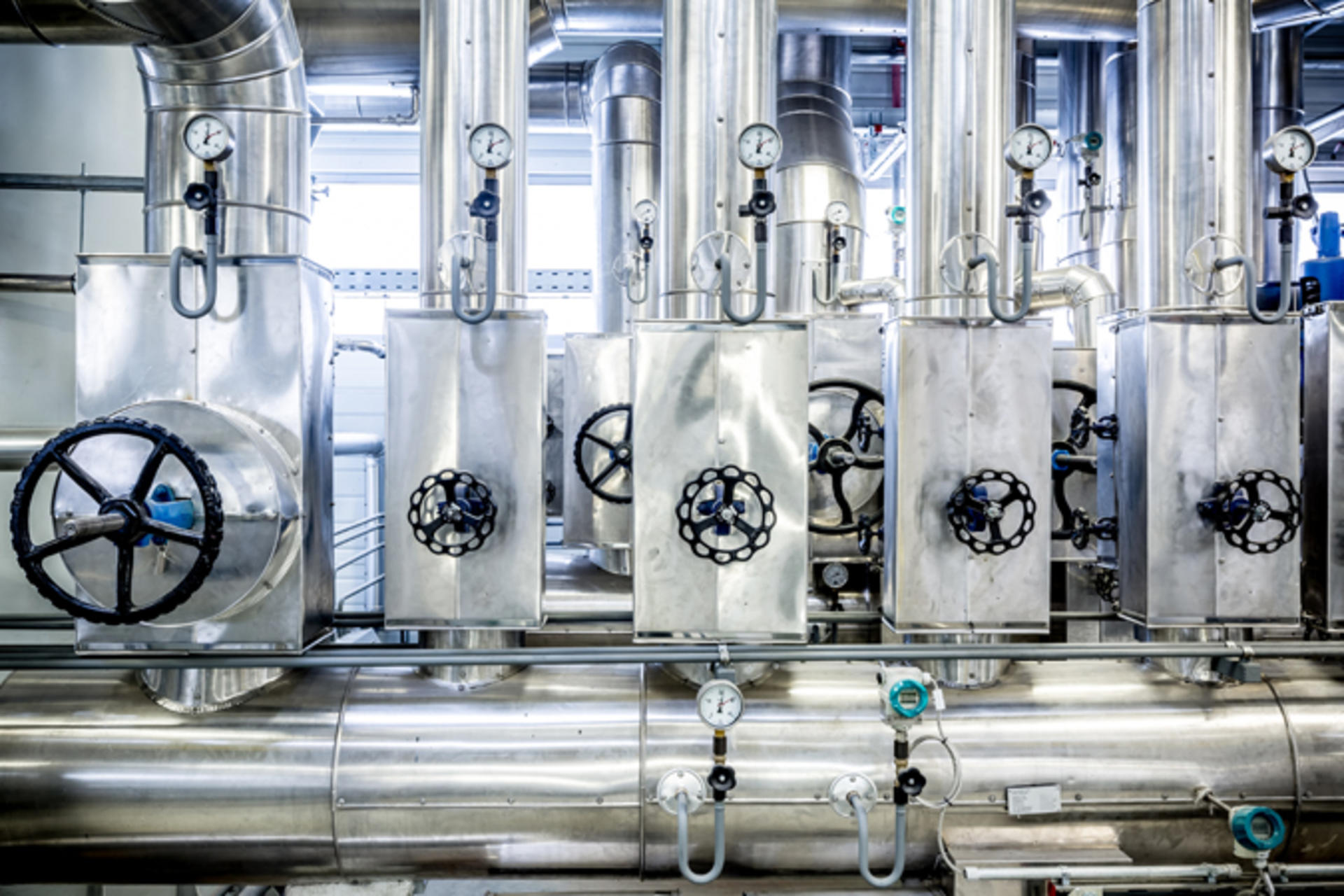Intelligent use of steam as a by-product
Process steam is a commonly used industrial term for steam that is used directly in an industrial process. In this context, use is often limited to providing heat for cooking, evaporation or distillation processes, for example. It is also used as a heat source in drying processes or to provide heat for endothermic reactions in the chemical industry.
Process steam as a heat carrier
The provision of heat for industrial processes is an essential task for guaranteeing the creation of economic value. This often differs significantly from space heating due to the specific requirements of the individual processes.
The main characteristic of process steam is that, in contrast to liquid heat sources such as water or thermal oil, most of the energy is contained in the enthalpy (thermodynamic potential) of evaporation. The sensible heat content, on the other hand, can be neglected.
The mass energy density of steam is therefore much higher than the energy density of liquid heat carrier. This has an impact on operating costs, especially for large district heating networks, since the required mass flows must be realized by pumping.
When extracting energy from a liquid heat transfer medium, its temperature drops. It is therefore not possible to extract heat from hot water at a constant temperature. With a flow temperature of 90 °C and a return temperature of 70 °C, for example, heat is given off at an average temperature of 80 °C. The water steam condenses under ambient pressure at a temperature of approx. 100 °C. The heat of condensation is given off continuously at the corresponding boiling/condensing temperature until all the steam has condensed. This temperature depends on the pressure. This allows the heat supply temperature to be precisely determined via the system pressure, which is a great advantage in many industrial processes. The supply temperature therefore corresponds to the required process temperature and is lower than with hot water. This minimizes heat losses and reduces operating costs, especially in the case of long pipelines.
In addition, the heat transfer at the heat exchanger surface is relatively high during both evaporation and condensation. This has design advantages, especially in designing suitable heat exchangers.
Process steam as a by-product in industry
Steam is a suitable working medium that is used in most steam processes to generate electricity. Water is evaporated under high pressure, the compressed steam is expanded in a turbine, which supplies mechanical and electrical energy through an alternator. The steam is then condensed and feed pumps carry the liquid water back to the evaporators. By receiving the steam from the turbine (steam extraction turbine) or using the steam downstream of the turbine (back-pressure turbine), for example in industrial processes, the supply of process steam can be combined with the generation of electricity. Through the dual use of steam, a high overall degree of efficiency can be achieved. Due to the environmental benefits, the so-called combined heat and power generation is also politically supported.
Why steam?
Besides steam, organic oils can also be evaporated and used as a working medium or heat carrier. This makes sense when special requirements are placed on pressure and temperature. However, in most cases steam is chosen as the medium.
Water is one of the most common substances on our planet. Its physical properties have been thoroughly studied and documented. Experience with water and steam as heat carriers and working media dates back to the beginning of the industrial revolution. As such, water is relatively inexpensive, completely non-toxic to humans and animals, non-flammable and easy to use.
At GETEC, we know all about technology steam and the possibilities of using it! Call us and make an appointment. Together we will find the optimal scenario of cooperation.


